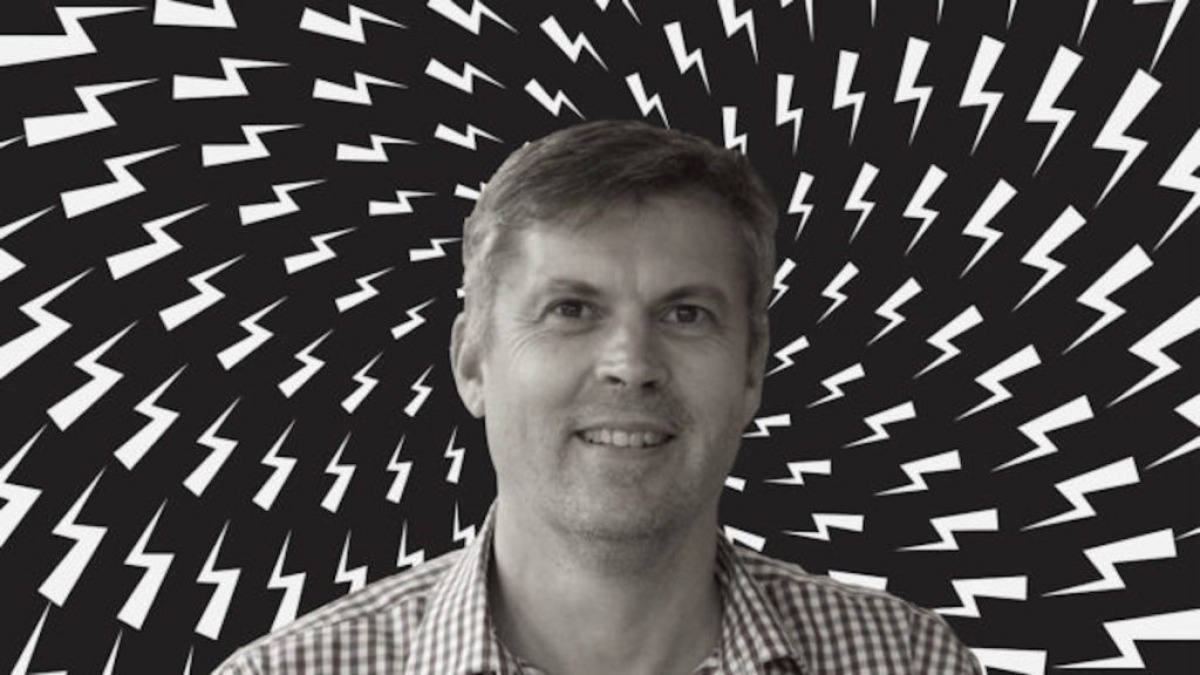Dr Boreham’s Crucible: Can this aortic stenosis detection specialist keep things pumping post FDA approval?

Tim Boreham is one of Australia's best-known small-cap share analysts and business journalists.
Echo IQ executive chair Andrew Grover is generally cheerful and optimistic, but wasn’t in the weeks leading up to the US regulator’s approval of its artificial intelligence-based aortic stenosis (AS) diagnostic tool last month.
“I wasn’t thinking of the upside, I was thinking of what the hell would happen if we didn’t get [approval],” he says. “It would have been a company killer.”
He would have been surprised if the US Food and Drug Administration (FDA) had knocked back the entreaty, lodged in May this year.
In any event, management can rest easier as it turns to commercialising Echosolv-AS, an algorithm that promises more accurate and earlier diagnosis of the common disease, involving a narrowing of the aortic valve.
“The company now has the ability to commercialise its technology in the world’s largest and most well-regulated market, for a condition which is widespread and chronically underdiagnosed,” Mr Grover says.
This week, the company won the key endorsement from Harvard University’s main teaching hospital, the Boston-based Beth Israel Deaconess Medical Center (see below).
The company is also preparing an FDA marketing application for heart failure, generally – a much bigger indication.
New man at the top
On October 9 the company said its US chief Dustin Haines would be CEO as of January 10, thus providing an interregnum period like that of Donald Trump who assumes the reigns of US Inc on January 20.
Mr Haines most recently was Gilead Sciences’ general manager for Asia, the Middle East, Turkey and Russia.
Before that, he was chief commercial officer for the ASX-listed wound-healing house Next Science.
Mr Haines says Echo IQ hasn’t enunciated its vision well enough and – true to that belief – he helmed an investor update on November 6.
He says Echo IQ has a “very simple” vision to become the world’s leading healthcare company.
“We will focus on [artificial intelligence] to reduce complexities in the diagnosis of cardiovascular disease”.
About Echo IQ
Unlike traditional diagnoses, Echo IQ’s platform doesn’t rely on blood obstruction measurement to detect aortic stenosis.
Instead, it uses machine learning to enhance clinical detection and flag patients that may have been missed.
Echo IQ evolved from the National Echo Database of Australia (NEDA), the world’s biggest repository of echocardiogram (ECG) images.
The company was founded by NEDA’s founders, Dr Geoff Strange and Prof David Playford.
In March 2021, the ASX-listed artificial intelligence (AI) company Houston We Have acquired Echo IQ for $2.5 million in cash and scrip, and later became Echo IQ.
Houston We Have evolved from predictive analytics software vendor Veriluma, which entered administration in 2017.
Houston We Have provided data analytics (such as churn stats) to 17 Australian health insurance funds, but the company turned to more profitable ideas.
“Aortic stenosis was the lowest hanging fruit,” says Echo IQ chief commercial officer Deon Strydom.
“It is not the largest indication, but there are no medical interventions other than a valve insert.”
In October, the FDA approved Echosolv under the 510(k) predicate device path, “as a decision-support aid in the detection of severe aortic stenosis”.
About aortic stenosis
Aortic stenosis is when the aortic heart valves narrow, usually owing to calcification. This makes it harder for the ticker to pump the claret.
Aortic stenosis has no cure and can only be rectified by valve replacement, rather than exercise or a change of diet.
At least the patient’s chest doesn’t have to be cracked open: these days the valve can be inserted via a vein, with the patient usually discharged in two days.
So that’s all fine and dandy if the patient has been diagnosed as high risk, but the guidelines – dating back to the 1960s – are rigid.
The classifications of ‘mild’, ‘moderate’ or ‘severe’ determine whether surgery is required.
“If you are diagnosed as severe you will get a heart valve. If you don’t, there is a 50 per cent chance you will be dead in three years,” Mr Strydom says.
The trouble is, 30 to 50% of patients are misdiagnosed.
What’s more, a female is 66% less likely to be diagnosed accurately, because the guidelines don’t consider that a woman’s heart and arteries are smaller.
Missed it by that much …
Mr Strydom says the prescriptive rules mean that someone with a valve circumference of 1.01 square centimetres might just fall out of the ‘severe’ category of less than 1.00 square centimetre.
While the current guidelines consider a handful of risk factors, Echosolv considers 170 different measurements, including age, ejection fractions (how much blood the heart spurts) and valve diameter.
The software completes the diagnosis automatically, with a diagnosis available in three seconds.
“The AI does every single measurement every single time and it gets its right,” Mr Strydom says.
Based on capturing the heart images with ultrasound soundwaves, ECGs are widely available and cost effective. But cardiologists are often looking for multiple conditions at once, and as they have similar symptoms, this leads to under diagnosis.
“Echosolv’s secret sauce lies in recognising numbers as right or suspicious,” Mr Strydom says.
“If there’s missing information the [software] can impute it.”
Getting it 100% right
In 2021, healthcare giant Edwards Lifesciences agreed to fund the company’s aortic stenosis clinical trials, which compared Echosolv with the ability of clinicians to detect the malady manually across 9,189 ECGs.
Carried out at St Vincent’s Sydney and Melbourne hospitals, Echosolv-AS detected all 376 aortic stenosis cases compared with 218 for the human appraisers (a 42% miss rate).
The tool also detected a further 174 patients at high risk of developing aortic stenosis.
Mr Strydom says Ecosolv only looks at the numbers generated from the ECGs, rather than the images.
“Other companies are looking at AI to allow cardiologists to capture a better image,” he says.
“But you want the information while the patient is in front of you. Our [diagnosis] takes three seconds versus 12 minutes because we don’t have to process images.”
Beth Israel does its homework – and says yes
The Beth Israel Deaconess Medical Center came on board after testing Echosolv-AS, across 31,000 stored patient echocardiograms.
As with Echo IQ’s own trials, Echosolv-AS was almost perfectly accurate – 98% to be specific – in detecting aortic stenosis in the case of patients who fell within the established risk guidelines.
But the tool also detected about 1000 asymptomatic patients who were very much at risk.
Mr Strydom says the ‘integration agreement’ with Beth Israel provides crucial endorsement of the life-changing benefits of Echosolv-AS.
“If Beth Israel adopts this AI, the other [leading hospitals] are forced to as it then established as best practice.
“This is one of the best of the best hospitals saying ‘we need help with aortic stenosis diagnoses.”
Crucially, the Beth Israel deal won’t result in immediate revenue, with the hospital permitted to use the tool gratis on the understanding it will pay per-test once reimbursement is established.
Thereafter, the company expects “hockey stick” revenue growth.
Meanwhile, Echo IQ is in discussions with one of the top five US private hospital groups, accounting for 41 facilities.
Strydom says Echo IQ has ‘approved vendor’ status, but the deal is not yet done.
To date, Echo IQ has signed up four smaller facilities – more the equivalent of our bush nursing hospitals (fine institutions that they are).
Read also > Health Check: Hearts aflutter as Echo IQ aces deal with major US teaching hospital
Follow the money
Mr Strydom cheerfully admits that Echosolv is all about saving lives – but it’s even more about making money for the hospitals.
An aortic stenosis procedure in the US costs around US$22,000 to US$28,000 and is a very lucrative one for hospitals.
“Having lived in the US health system, I know that it is all about making money,” he says. “For instance, there was no point in us pursuing hypertension, because the treatment is cheap aspirin.”
He says most of the hospitals have on-staff cardiologists, so it’s the same wage whether they do one procedure or 50 a day.
“Hospitals want to keep their operating rooms full.”
The route to commercialisation
The US aortic stenosis market is estimated at 1.5 million sufferers, who cost the health system about US$10 billion a year.
As well as signing up marquee hospitals, Echo IQ is focusing on agreements with the so-called integration companies that compile and provide the ECG reports to the physicians.
As with Beth Israel, the artificial intelligence software overlay initially will be provided for free with these reports.
“The moment we get reimbursement, we can flick the switch on all of these sites that have been free-of-charge and become revenue generating,” Mr Strydom says.
He says working with these intermediaries obviates the need for a direct sales team.
Reimbursement is expected to be around US$60 to US$64 per test, with Echo IQ taking a 24% cut and the hospitals pocketing the rest.
Currently, the US Medicare system (for the over 65-year-olds) reimburses five million aortic stenosis images annually.
“We expect private insurance coverage in due course,” Strydom says.
The company expects first revenues in the March 2025 quarter, but it won’t be a torrent, initially.
Heart failure
Echo IQ expects to file an FDA approval application for heart failure “this side of Christmas”.
Heart failure is when the ticker can’t pump blood effectively, but once again, diagnosis can be tricky given the symptoms might be dismissed as ‘old age’.
In two studies, Echo IQ software “clearly and correctly” identified 86% of patients with heart failure, compared with 46% under current clinical practice.
Aiding a human review, the software identified 97% of high-risk individuals who subsequently developed heart failure.
“Those deemed high risk for heart failure by Echo IQ’s AI at baseline were subsequently hospitalised at almost 10 times the rate of those found to be low risk,” the company says.
The studies were done at Melbourne’s St Vincent’s Institute of Medical Research and The University of Notre Dame at Fremantle in Perth.
Finances and performance
Echo IQ in September raised $7.1 million at 15 cents a share in an institutional placement, at a 6.3% discount.
The proceedings accounted for most of the September quarter cash balance of $12 million.
On 10% penetration of the US aortic stenosis detection market, the company estimates US$6.5 million of recurring revenue.
The heart failure tests should be reimbursed at US$280 per test, with 10% market reach achieving US$42 million of recurring revenue.
Over the past 12 months Echo IQ shares have fluttered between one cent (mid-April this year) and 31 cents (October 9 this year).
These are also the historic highs and lows since the backdoor listing.
Dr Boreham’s diagnosis
Mr Strydom says Echo IQ is also interested in tackling diastolic dysfunction or pulmonary hypertension but is focused on commercialising the aortic stenosis and heart failure tools over the next three years.
This makes sense.
He says Echosolv fits with the US ethos of ‘democratising’ healthcare, so the standard-of-care is the same regardless of location, race or sex.
As a robot, AI is not subject to the biases that influence human diagnoses.
“You will get exactly the same diagnosis in outback Alabama or central New York,” he says.
Apart from saving money and lives – in that order apparently – hospitals may use Echosolv to reduce the risk of litigation.
“In the US, cardiovascular disease is the third-biggest reason for medical litigation and single biggest cause of hospitalisation,” Strydom says.
“Once a large hospital starts using AI to diagnose structural heart disease, it is exposing itself to litigation if it doesn’t do it again.”
Meanwhile, Mr Haines notes that cardiovascular disease remains the world’s biggest killer.
“We believe in the next four to five years we will impact more than one million lives with our technology,” he says.
“All too often [cardiovascular disease] diagnosis happens far too late or not at all.”
At a glance
ASX code: EIQ
Share price: 24.5 cents
Shares on issue: 588,521,043
Market cap: $135.4 million
Chief executive officer: Dustin Haines (as of January 10, 2025)
Board: Andrew Grover (executive chair), Steven Formica, Stephen Picton, Simon Tolhurst
Financials (year to June 30, 2024): revenue $44,500 (down 58.5%), loss of $5.41 million ($8.2 million deficit previously)
September quarter 2024: receipts nil, net cash outflows $1.65, cash of $7.12 million, 4.35 quarters of funding
Identifiable major shareholders: A22 Pty Ltd 4.84%, Stevsand Investment Pty Ltd (Steven Forman family) 4.6%, Richmond Bridge Superannuation 3.7%, Alerte Digital Health 2.95%, Bellco Investment Pty Ltd (Northland super fund) 2.59%, Brian Glynn 2.36%
Disclosure: Dr Boreham is not a qualified medical practitioner and does not possess a doctorate of any sort. He thus exposes himself to litigation but don’t get any ideas.
This column first appeared in Biotech Daily.
Related Topics

UNLOCK INSIGHTS
Discover the untold stories of emerging ASX stocks.
Daily news and expert analysis, it's free to subscribe.
By proceeding, you confirm you understand that we handle personal information in accordance with our Privacy Policy.








